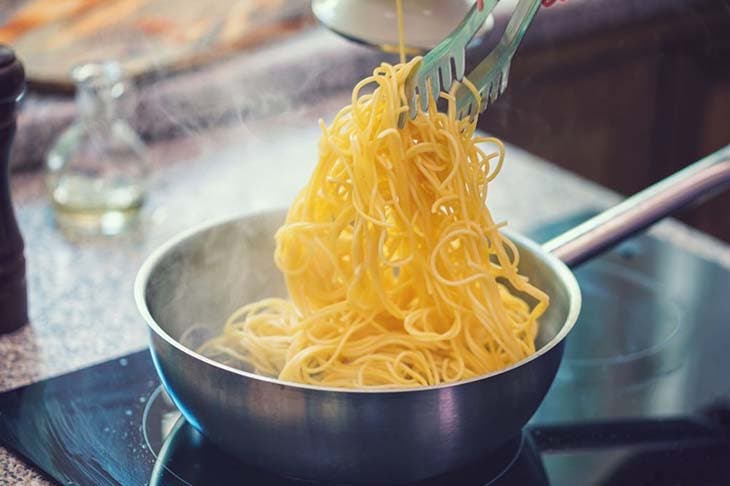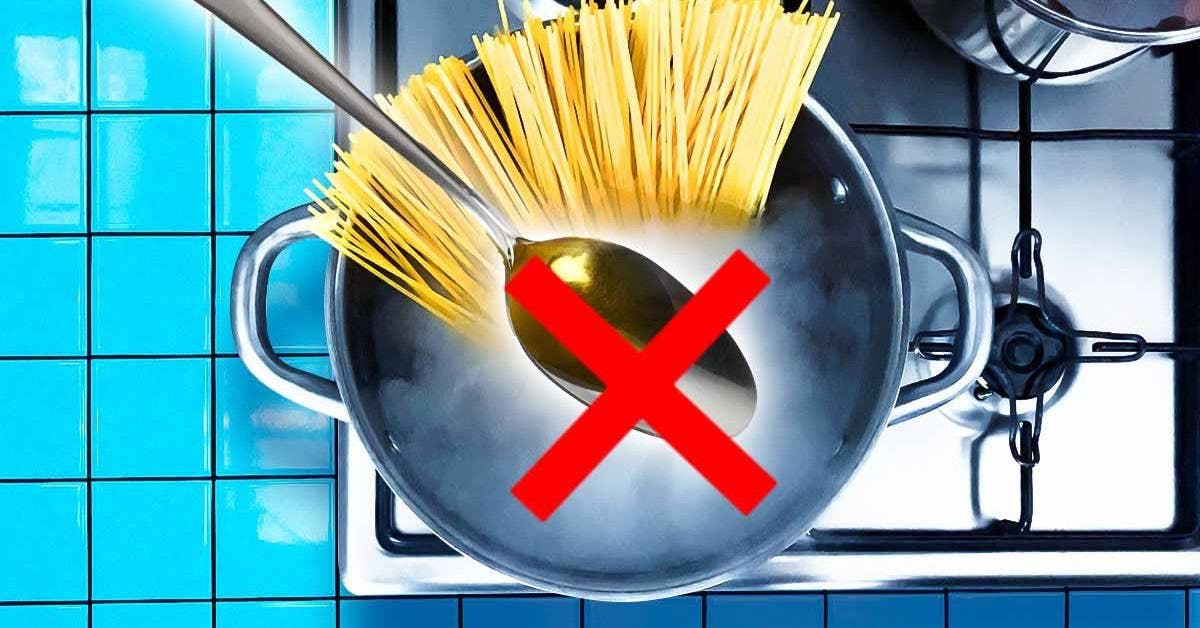Here's Why You Should Never Add Oil When Cooking Pasta
Spaghetti, penne, fusilli, macaroni… Who doesn’t like to eat delicious Italian pasta? It is one of the most popular dishes around the world. As a bonus, it is simple, economical and quick to prepare. No need to be an experienced cook to concoct it. And yet, don’t get me wrong, behind the ease sometimes hide a few little pitfalls that can complicate things. Unexpectedly, even when preparing simple pasta, you can make some mistakes when cooking. Without counting these culinary habits which have the hard tooth. Do you always pour a little oil into the pan? But why do it?
Cooking a good plate of pasta may seem completely banal and innocuous. This does not prevent some people from ending up with sticky, mealy or on the contrary too hard pasta. Yes, sometimes it takes art and technique to successfully cook al dente. Generally, we are convinced that we must add a few drops of oil to the cooking water to prevent our pasta from sticking to the bottom of the pan. Scoop of the day: it’s totally useless, since it changes absolutely nothing. And for good reason, as you will surely notice each time, the oil is found on the surface of the water and therefore does not come into contact with your spaghetti. We tell you more.
Adding oil to the pasta cooking water, good or bad idea?
Pasta in boiling water – source: spm
Contrary to popular belief, it is not necessary to add oil to your pasta cooking water. It would be a complete waste, so from now on save oil. If you don’t want the pasta to stick together in the pan, just cook it in plenty of salted water: 1 liter of water and about 2 g of salt for 100 g dry pasta.
The use of olive oil will only be of real interest when your pasta is cooked and mixed with the sauce. This drizzle of oil will bring tasty aromas to the whole: the sauce will thus be able to marry harmoniously with the spaghetti or the penne. pasta cooking water in the sink. You should know that this water, nicknamed “liquid gold” by culinary experts, is very useful for enhancing your sauce. Indeed, this liquid is exactly what you need for emulsification, resulting in a silky smooth sauce with the perfect consistency.
A little tip : to prevent the pasta from sticking in the pan, make sure you always respect the cooking time. Because if they simmer more than expected, the starch they hold may release a large amount of amylose. The latter is a very sticky substance that tangles the pasta during cooking.
- The most common mistakes when cooking
-
Watch the cooking time
-
Remove the cover
If the packaging indicates minutes of cooking, do not go further. It is always advisable to follow these instructions carefully to make your pasta a success. Then, drain them well and keep the cooking water to mix it with the sauce.
Use the lid to cover the pan only until the water boils. Then, once you throw the pasta inside, don’t cover it.
Five tips for better cooking your pasta

Well-cooked pasta – source: spm
Use a large saucepan. As the pasta cooks and expands, if there is not enough water, it will inevitably become soft and sticky. It is therefore always better to bet on a sufficient quantity of water!
Before bringing it to the boil, put cold water in the pan and without oil. Only add salt when the water begins to boil.
Some specialists advise removing the pasta four minutes earlier than indicated on the packaging, so that it finishes cooking once mixed with the sauce. They will thus be perfectly al dente.
Read also The trick to keep lettuce fresh and crisp for 3 weeks



